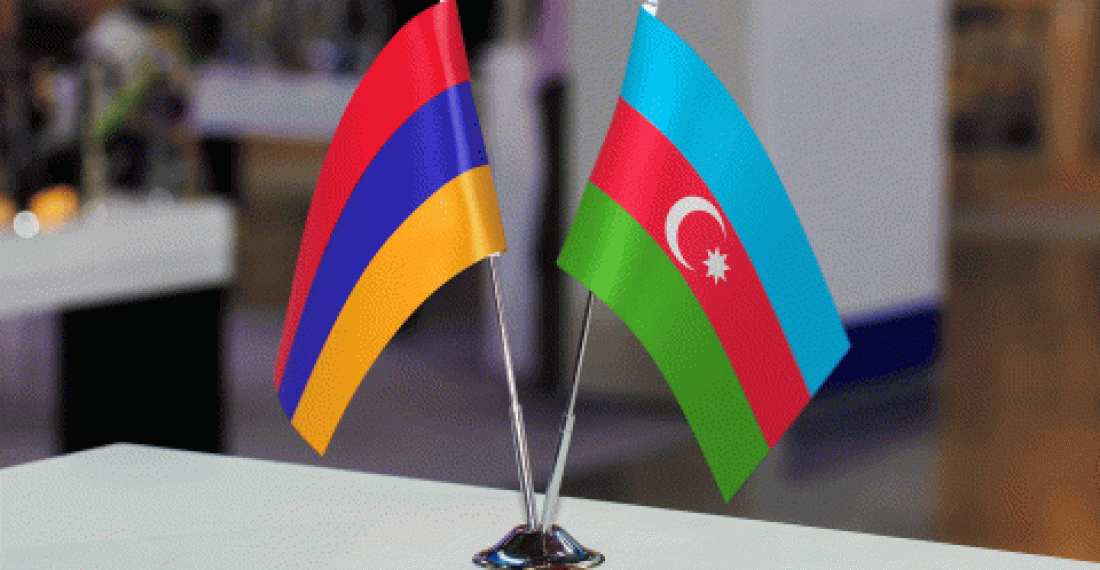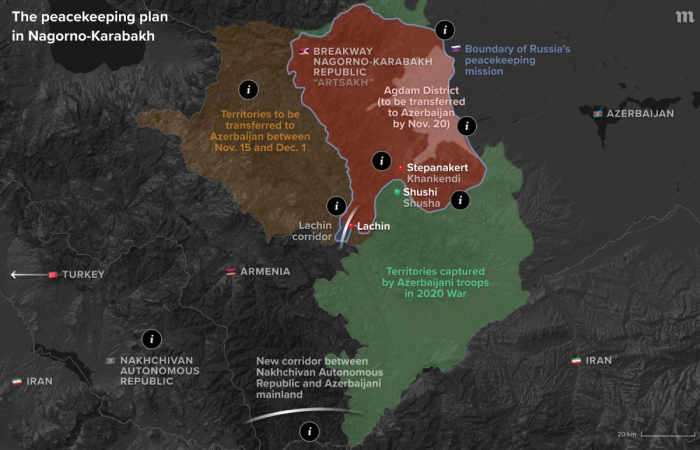As the South Caucasus enters 2025, uncertainty surrounds the year ahead. Even as 2024 ended, Georgia was still embroiled in over a month of daily protests following controversial parliamentary elections and as has been the case every year since independence in 1991, a deal between Armenia and Azerbaijan to normalise relations remains elusive. That is particularly unfortunate given that 2024 marked the 30th anniversary of the 1994 ceasefire agreement.
November also marked another anniversary – the fourth since another trilateral ceasefire statement ostensibly ended the second war in 2020. Though 2024 did not see any new outbreak of fighting, hopes that the United Nations Climate Change Conference in Azerbaijan the same month could yield a breakthrough were dashed again. Yerevan didn’t attend the event, apparently because no deal to release some Armenian detainees still held by Azerbaijan was forthcoming.
Even the outgoing Biden administration in the United States, eager to facilitate a peace agreement before president-elect Donald Trump’s takes over on 20 January, couldn’t speed up the process. Some believe that Baku was anyway more focused on delaying an agreement until the new administration is in place. Yerevan had hoped that one could have been signed even if some points remain unresolved.
Though 2024 was relatively stable on the Armenia-Azerbaijan, now with 12.7 km demarcated, others seem more wary. For many in Armenia, the danger of a new escalation remains a possibility while Azerbaijan seeks to use its stronger position to solicit more concessions. Meanwhile, Armenian Prime Minister Nikol Pashinyan will use the year ahead to prepare for new parliamentary elections by June 2026.
The situation is further complicated by Pashinyan's need for an agreement before that vote given his post-2020 “peace agenda” promised in 2021. Still, just before the year ended, both Yerevan and Baku confirmed that 15 of 17 points in the draft Agreement on Peace and Establishment of Interstate Relations had been fully agreed. However, two outstanding points on dropping any mutual legal actions and prohibiting the deployment of third country forces remained.
For Azerbaijan, this specifically means the European Union Mission in Armenia (EUMA). The mission’s first two-year term will be up for renewal in February. Pashinyan has instead proposed to withdraw EUMA only from those parts of the border that have been demarcated.
But there are other demands too.
Most notably, Azerbaijan demands that Armenia removes a controversial preamble from the its constitution referencing the 1990 declaration on the unification of Soviet Armenia and Mountainous Karabakh so as to prevent territorial claims in the future. Baku also seeks the dissolution of the now defunct OSCE Minsk Group, hitherto internationally mandated to mediate between the sides prior to 2020.
Yerevan says it is not against such a move but only after an agreement is signed. It anyway seems unlikely that the format, co-chaired by France, Russia, and US, can function while the war between Ukraine and Russia continues. As for the constitution, Pashinyan many times criticised the 1990 declaration since 2023 and since coming to power in 2018 has made constitutional reform a priority.
So much so, in fact, that he would not want to be seen to be instead kowtowing to Baku in doing so. Some in Pashinyan’s circle maintain the preamble will anyway be removed as part of larger constitutional changes likely to be put to referendum in 2027.
Few also think he will agree to the early withdrawal of EUMA. Even as relations between the EU and Georgia sour, the European Union Monitoring Mission (EUMM) there was extended in December. Speaking at the Antalya Diplomacy Forum in Turkiye early last year, then EU Special Representative for the South Caucasus, Toivo Klaar, asserted EUMA would leave once an agreement is signed.
EUMA can also deflect domestic criticism of further demarcation as the 2026 elections approach but it should be aware that its role is to contribute to building confidence between the sides as well as in border communities.
Perhaps more to the point, Baku appears concerned that while both the OSCE Minsk Group and EUMA exist then either might potentially focus on the right to return of the Karabakh Armenians that fled from the formerly Soviet-era autonomous region within Azerbaijan in 2023.
This could also explain why Baku raises the issue of the right of return for what it terms those Western Azerbaijanis that left Armenia in the late 1980s. Baku is eager to remind Yerevan that the right to return refers to all IDPs and refugees. In a 2021 podcast, researcher and analyst Emil Sanamyan stated that in the late 1980s, Azerbaijan made the continued existence of ethnic Armenians within its borders contingent on whether any ethnic Azerbaijanis remained in Armenia.
Armenia’s demilitarisation is just as controversial. Though it is unlikely that Yerevan could fight another war anytime soon, Azerbaijan notes that revanchist forces opposed to Pashinyan still exist inside Armenia and some groups in the diaspora. Analysts in Yerevan argue, however, that new weapon purchases from France and mainly India are necessary to replenish an arsenal depleted by the 2020 war in order to deter another incursion by Azerbaijan as seen in 2022.
Instead, in lieu of any agreement in the next 12 months, Pashinyan maintains that any outstanding issues can be resolved after signing what has already been agreed. This also includes that critical overland route from Azerbaijan through Armenia to Nakhchivan that almost everyone wants but disagrees on how. But with Aliyev having already declared 2025 as the Year of Constitution and Sovereignty, it looks likely they will still remain an obstacle.
It would certainly be better if that isn't the case, but it would also be wise to manage expectations until demonstrated otherwise.






